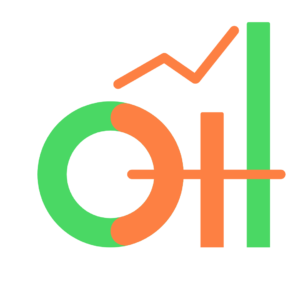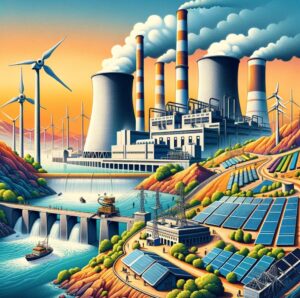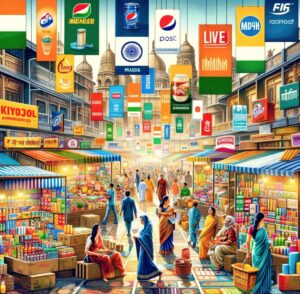1. Overview of Companies
ISGEC Heavy Engineering Ltd. (ISGEC)
ISGEC is a leading Indian manufacturer and supplier of heavy engineering equipment. The company primarily operates in sectors like Power, Oil & Gas, and Fertilizers. It specializes in manufacturing high-end industrial machinery for critical processes and offers EPC (Engineering, Procurement, and Construction) services.
Larsen & Toubro Ltd. (L&T)
L&T is one of India’s most diversified conglomerates, with operations in sectors ranging from construction and engineering to information technology and financial services. Its engineering division is involved in sectors like infrastructure, defense, and heavy engineering, making it a formidable player in the heavy engineering and construction space globally.
Bharat Heavy Electricals Ltd. (BHEL)
BHEL, a state-owned entity, is one of India’s largest manufacturers of power generation equipment, including turbines, generators, and transformers. BHEL is highly involved in the energy sector and plays a critical role in the country’s infrastructure development and industrialization.
Thermax Ltd.
Thermax is an Indian multinational that provides engineering solutions in energy and the environment sectors. It manufactures boilers, heaters, chillers, air pollution control equipment, and other energy-efficient products. It operates globally in markets like power, chemicals, and petrochemicals, delivering integrated solutions.
Doosan Heavy Industries & Construction (Doosan)
Doosan is a global giant in the heavy engineering sector, headquartered in South Korea. It operates in the construction, power, and industrial machinery sectors. Doosan specializes in power plants, desalination plants, and other infrastructure solutions. It’s known for its advanced technology and large-scale global operations.
2. Business Model and Market Segments
ISGEC
- Primary Sectors: Power, Oil & Gas, Fertilizers, Cement, Steel, and Defense.
- Revenue Model: Primarily generates revenue from manufacturing heavy equipment, project execution, and providing EPC services to large industries.
- Strategy: Focuses on niche markets with highly customized solutions, providing end-to-end services from design to commissioning.
L&T
- Primary Sectors: Engineering & Construction, Infrastructure, Power, Heavy Engineering, Defense, Aerospace, IT, and Financial Services.
- Revenue Model: L&T operates through multiple divisions—engineering, construction, manufacturing, and technology solutions. Its engineering division generates significant revenue from large-scale infrastructure and industrial projects.
- Strategy: A diversified business model, with substantial investments in R&D and innovation, along with strong international expansion strategies.
BHEL
- Primary Sectors: Power generation, Transmission, and Heavy Electricals.
- Revenue Model: Revenue is primarily derived from manufacturing power equipment, providing services in the power sector, and constructing power plants.
- Strategy: BHEL focuses on maintaining a dominant position in the power equipment sector through robust technology development and a steady stream of public sector projects.
Thermax
- Primary Sectors: Energy, Environmental Engineering, and Chemicals.
- Revenue Model: It generates revenue by designing, engineering, and supplying equipment and systems for energy and environmental sectors, including boilers, chillers, and air pollution control solutions.
- Strategy: Focuses on energy efficiency and environmental sustainability, with strong R&D to offer customized solutions for clients in various industries.
Doosan
- Primary Sectors: Power Generation, Desalination, Construction, and Industrial Machinery.
- Revenue Model: It generates revenue through providing engineering solutions for power plants, water desalination, construction equipment, and other industrial services.
- Strategy: Doosan focuses on global expansion, technological innovation, and large-scale infrastructure projects in the power and water sectors.
3. Financial Performance (2023)
| Company |
Market Cap (₹ Billion) |
Revenue (₹ Billion) |
Net Profit (₹ Billion) |
PE Ratio |
ROE |
| ISGEC Heavy Engineering |
66.15 |
35.98 |
2.13 |
31.11 |
14.6% |
| Larsen & Toubro |
2,776.23 |
1,907.72 |
133.91 |
28.6 |
15.4% |
| Bharat Heavy Electricals |
602.12 |
397.46 |
16.84 |
10.43 |
7.3% |
| Thermax |
366.44 |
91.23 |
5.47 |
48.45 |
14.2% |
| Doosan Heavy Industries |
Not Listed in India |
$7.73 Billion |
$291 Million (2023) |
N/A |
N/A |
4. Key Strengths and Weaknesses
ISGEC Heavy Engineering
Strengths:
- High focus on niche, high-value industries with specialized engineering solutions.
- Strong project execution capabilities and a significant backlog of orders in diverse sectors.
- A robust market position in India, particularly in power and industrial sectors.
Weaknesses:
- Limited international footprint compared to larger global competitors.
- Relatively smaller market capitalization limits its growth and access to capital for large projects.
L&T
Strengths:
- Highly diversified across multiple sectors, minimizing risks associated with cyclical industries.
- Strong global presence, with significant projects in the Middle East, Southeast Asia, and Africa.
- A robust pipeline in construction, power, and defense.
Weaknesses:
- The large size and complex organizational structure can sometimes lead to slow decision-making.
- Increasing competition from international giants like China’s State Grid and global contractors.
BHEL
Strengths:
- Dominates the Indian power generation equipment market and has a long-standing relationship with the Indian government.
- Significant R&D capability and a recognized brand name in the Indian power sector.
- Strong position in the renewable energy segment with its solar and wind energy solutions.
Weaknesses:
- Heavy dependence on government projects and subsidies.
- Struggles with profitability and international expansion compared to other players in the sector.
- Underperforming stock price over the past several years.
Thermax
Strengths:
- Specializes in energy-efficient and environmentally sustainable solutions, which is a growing market globally.
- Strong R&D capabilities and innovation in clean energy technologies.
- Diverse customer base across a range of industries, including chemicals, pharmaceuticals, and power.
Weaknesses:
- Smaller market size compared to L&T and BHEL, which limits its capacity to scale rapidly.
- Strong competition from larger, more diversified players like Doosan and L&T in the global markets.
Doosan
Strengths:
- Global presence with a strong focus on large infrastructure projects.
- Leading position in power generation, desalination plants, and large-scale machinery.
- Technological innovation and high-quality manufacturing.
Weaknesses:
- Operating primarily in international markets, making it susceptible to global economic downturns.
- High reliance on government and large corporate clients for contracts, which could be volatile.
5. Growth Prospects and Future Strategies
ISGEC
ISGEC’s growth prospects lie in its ability to leverage niche markets like defense and specialized manufacturing equipment. It is expanding its footprint in foreign markets but remains focused on India’s infrastructural growth, including investments in renewable energy.
L&T
L&T’s future strategies revolve around expansion into global markets, particularly in the infrastructure and defense sectors. The company is also pushing for digital transformation in its construction business and increasing its presence in green energy.
BHEL
BHEL is focusing on renewable energy projects and has significant plans in the solar and wind energy sectors. The company is working on reducing its dependency on government contracts by increasing its footprint in the private sector.
Thermax
Thermax’s future strategy includes strengthening its global footprint, particularly in energy-efficient solutions and environmental technologies. The company is expanding its product portfolio to include sustainable energy solutions and green technologies.
Doosan
Doosan’s focus is on expanding its global presence in infrastructure projects, particularly in power generation and desalination plants. With the growth of smart cities and renewable energy, Doosan is well-positioned to capitalize on these trends.
6. Conclusion:
Each of these companies has its strengths and opportunities for growth, though they face challenges in a competitive market. L&T stands out for its diversification and global footprint, while Thermax and ISGEC offer strong specialized solutions. BHEL, despite its legacy in India, faces struggles in terms of profitability and global expansion. Doosan, although not listed in India, competes on a global scale with advanced technologies in power and infrastructure.
While L&T offers more growth potential due to its size and diversification, ISGEC and Thermax are attractive for their niche specializations. BHEL remains the go-to company in the Indian power sector but needs restructuring to compete effectively on a global stage.




